-
This is a view into the possibilities of thermally modified wood. A relatively new sustainable process, thermal modification begins with steam-heating domestically-sourced wood to over 400﮿ F. The wood turns a dark shade of brown, resists decay from rot and insects, and becomes much more stable. I began this project by CNC-routing a series of ash wood vessels, and placed them outdoors in the sun, rain, wind, and dirt. Noting the impact the elements had on the samples, I made a series of furniture, sculptures, and drawings that are activated by the environment.
While these works follow different avenues of inquiry, they share a constant – water. The presence of water - both inside wood and from its surroundings - is what causes wood to break down. Thermal modification allows wood to better resist the destructive impact of water. Everything is this body of work is designed to be activated by water. Furniture and sculpture will guide rainwater over and through them, and use reactive materials like copper that will patina over time. The drawings and prints are made with an ink I distilled from the wood. It is the dark, caramelized product of the thermal modification process.
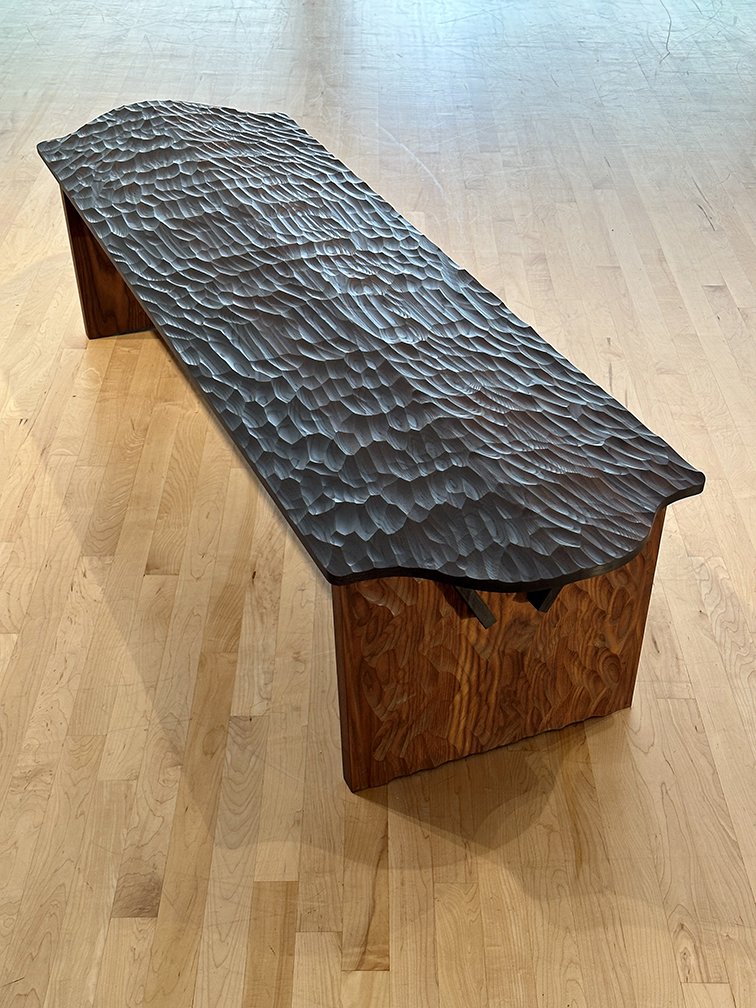
Step bench, 72” L x 28” D x 24” H, 2023
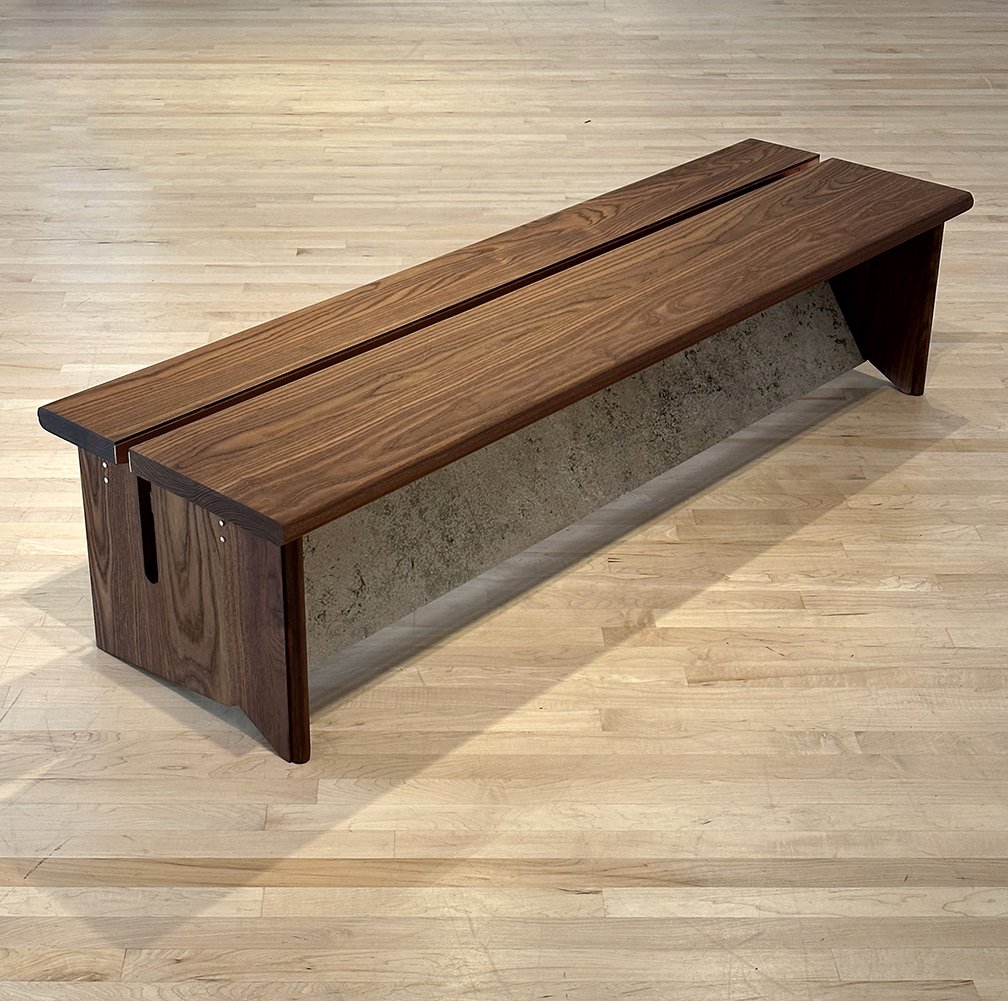
Drip bench, 72” L x 21” D x 16.75” H, 2023
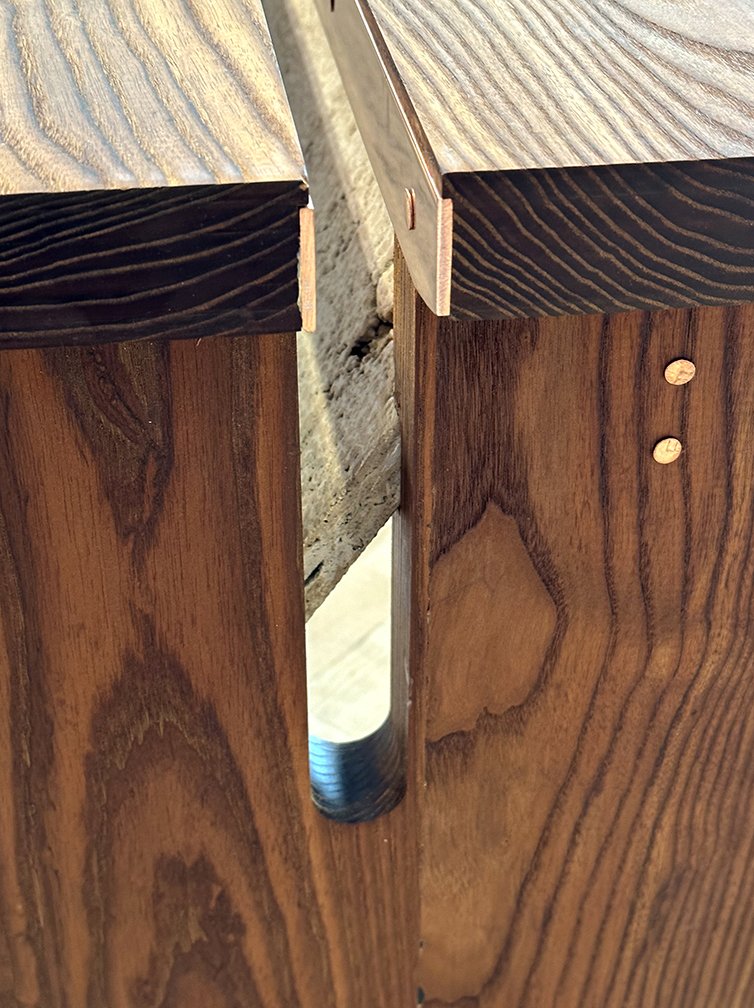
Drip detail. Water drips down the copper strips, which slowly patinas
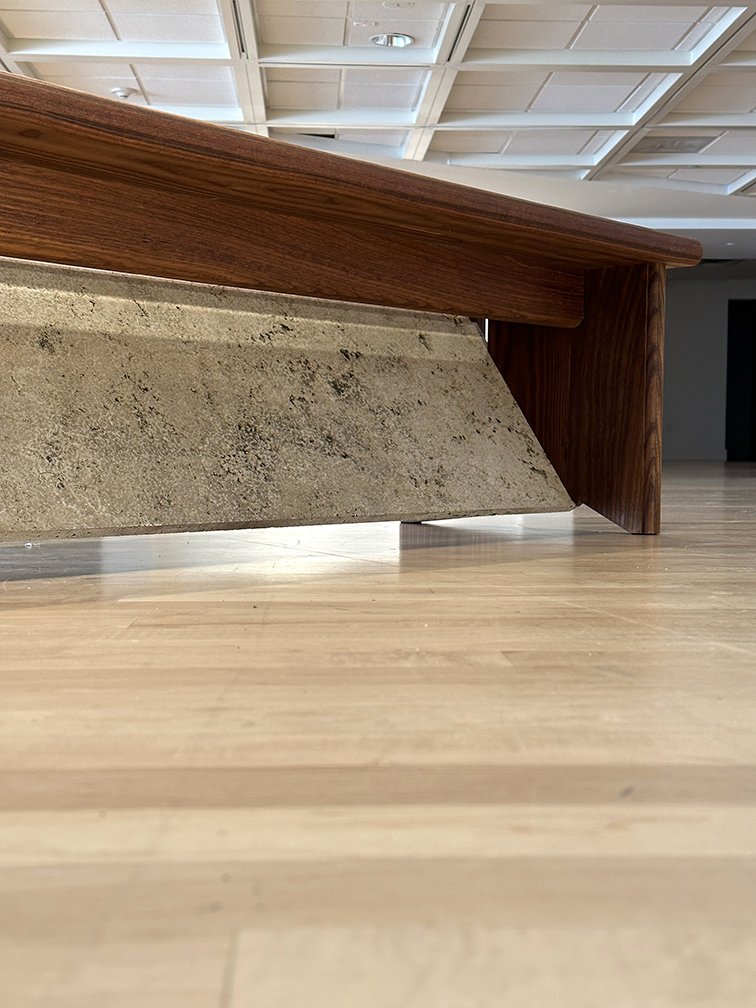
Drip detail. As the ash wood ages from dark brown to silver grey, the embedded copper plates slowly patina, dripping green oxidation onto the porous travertine.
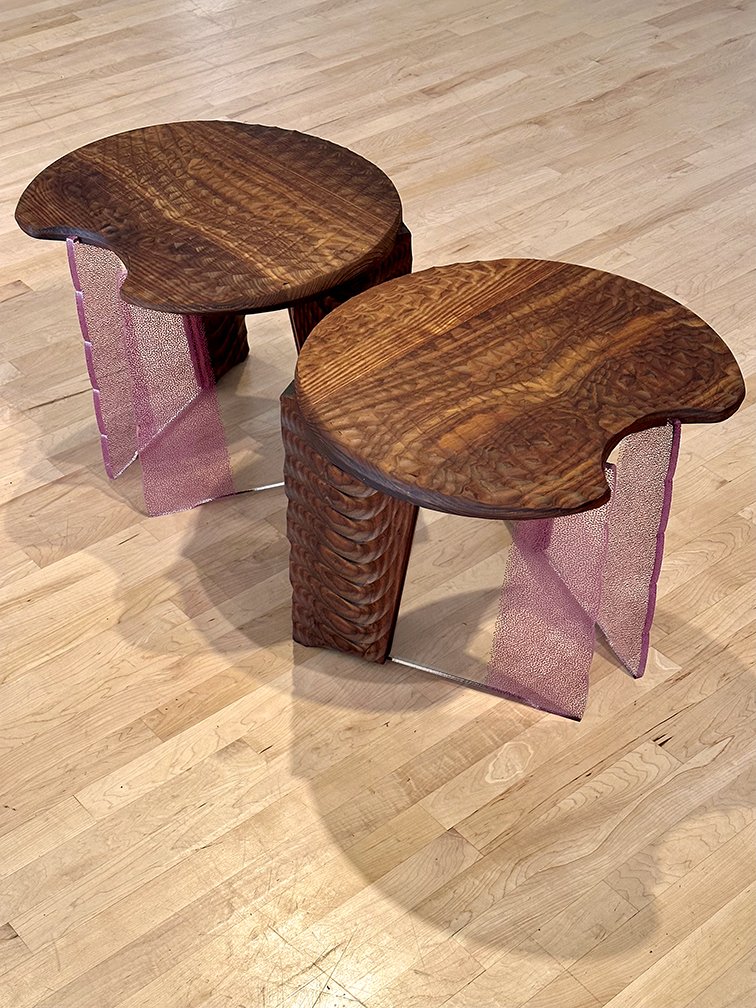
Shimmer stools, 22” W x 20” D x 17.5” H (each), 2023
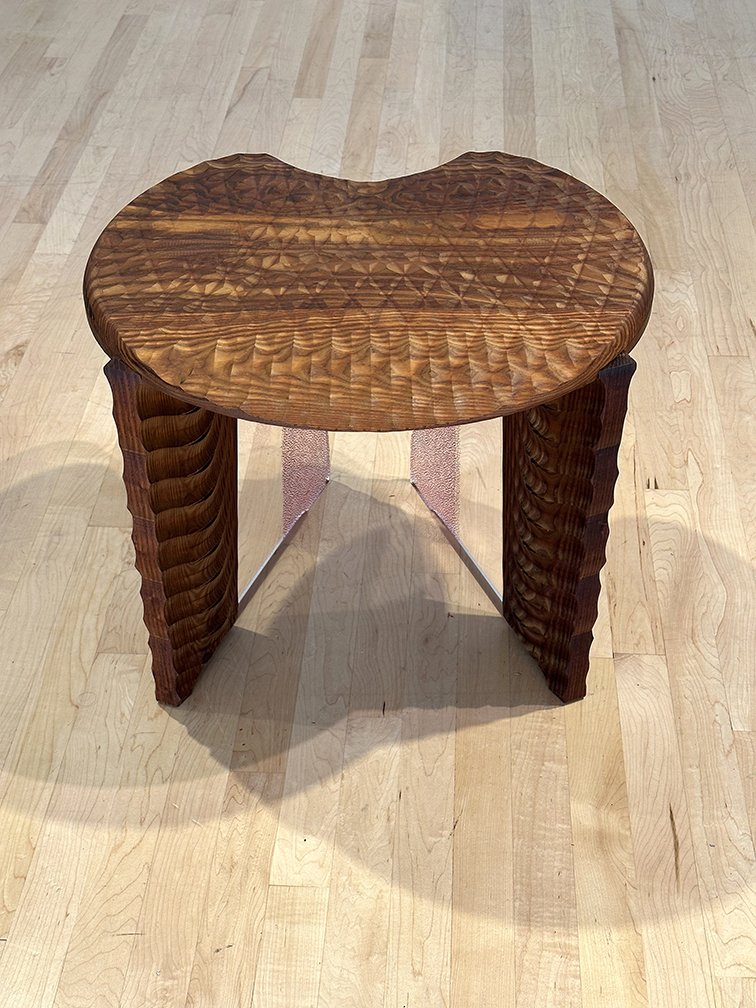
Shimmer detail. A pair of stools designed to be activated by rain. Water is guided down the carved profiles of the seat onto the protruding legs
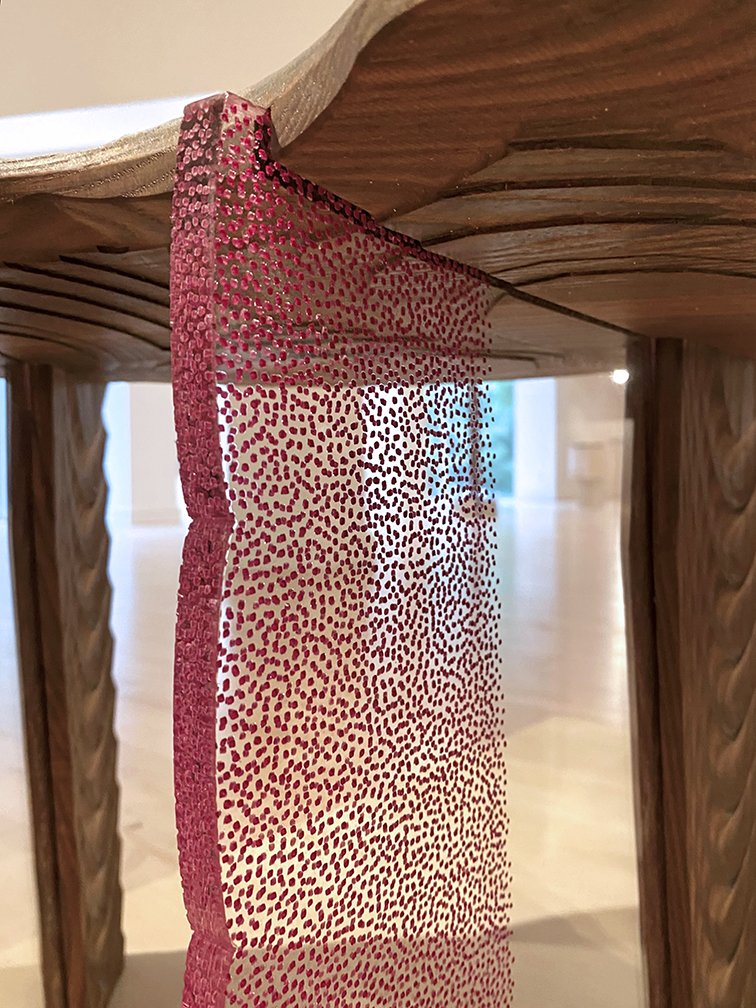
Shimmer detail
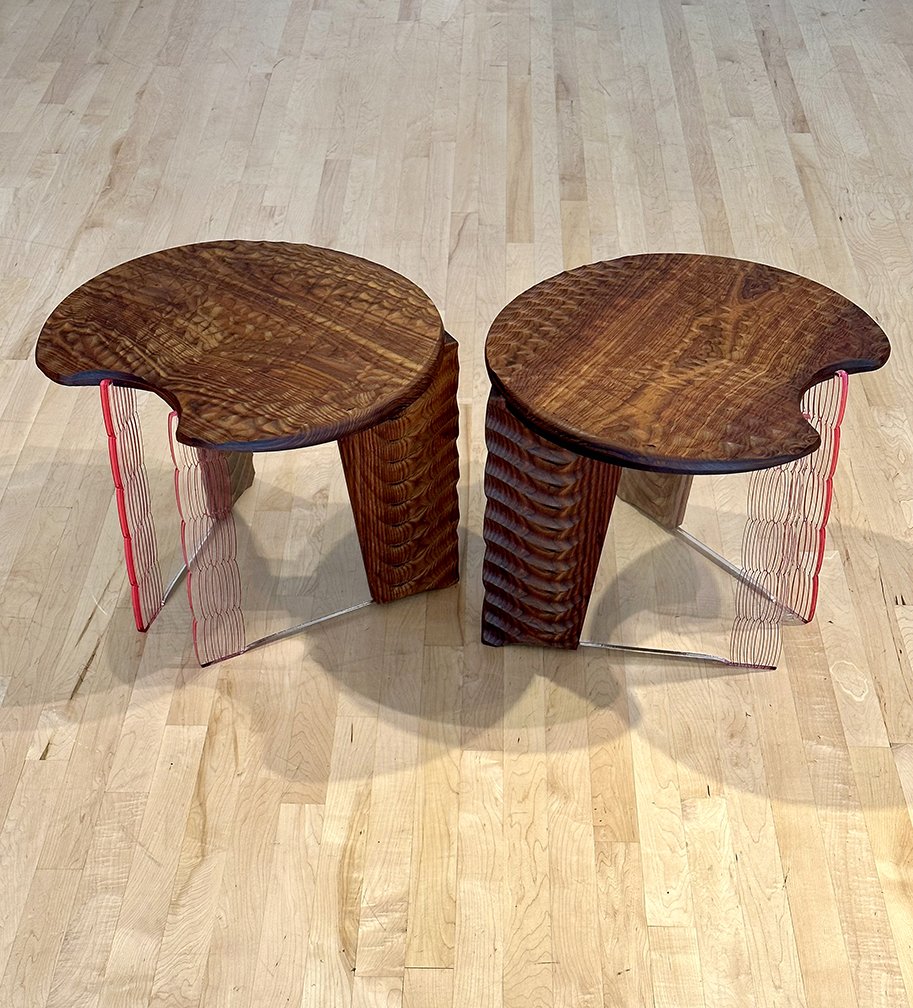
Flicker stools, 22” W x 20” D x 17.5” H (each), 2023
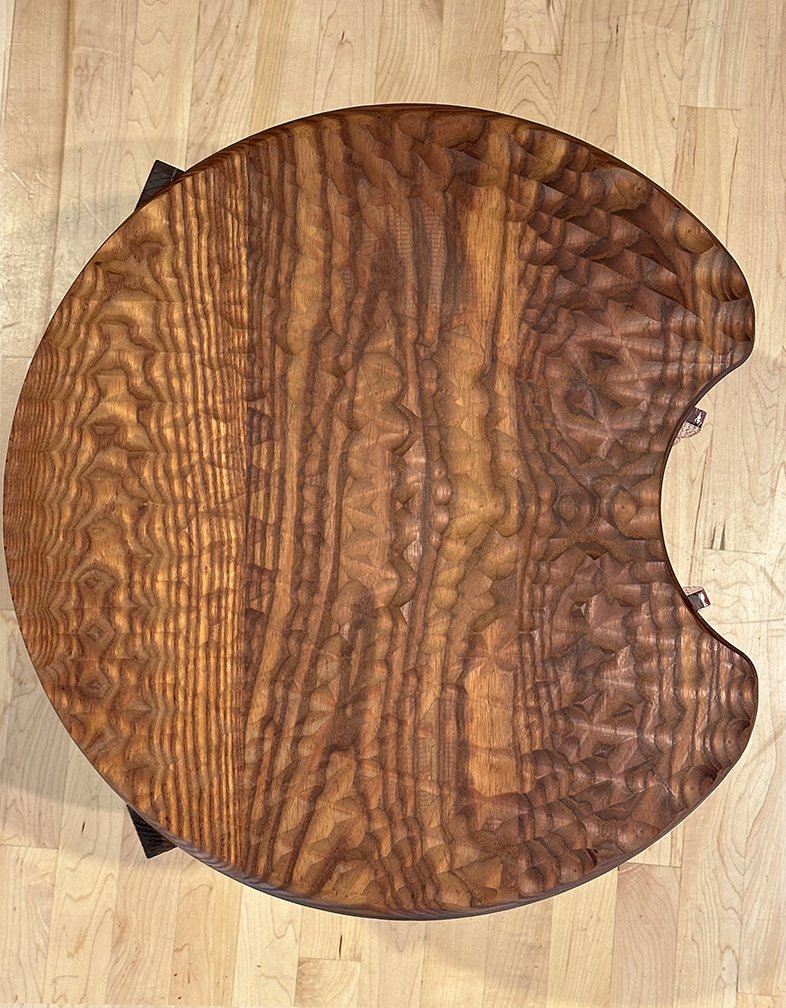
Flicker detail
Door
A pair of 9’ tall mahogany doors were left in the elements. The structure of the doors was either rotted or eaten away, leaving only the carved center panels. This door and center panel have been reimagined in thermally modified ash.
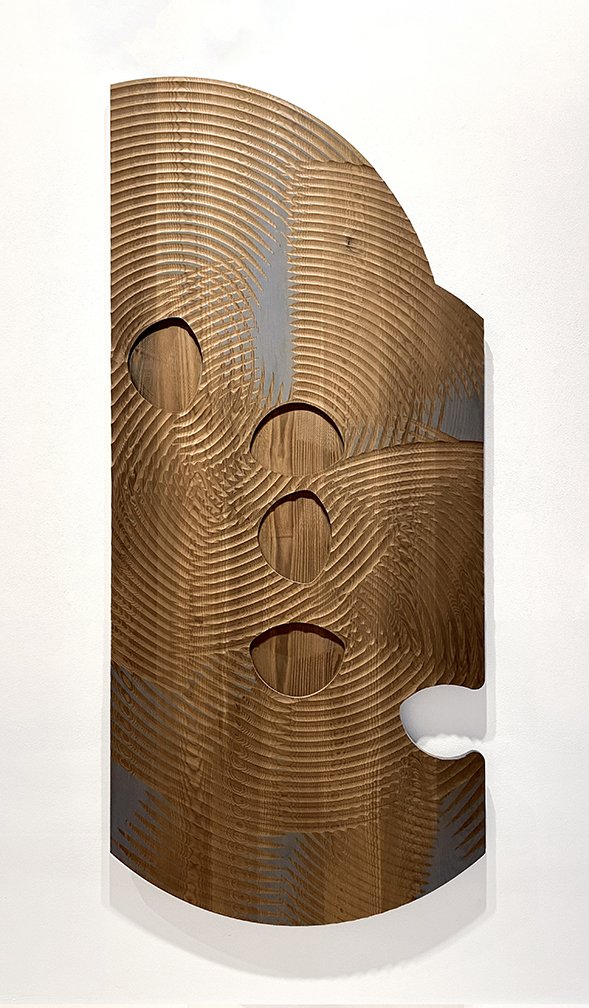
Door (Found angel), 84.5” H x 36.75” W x 1.5” D, 2023
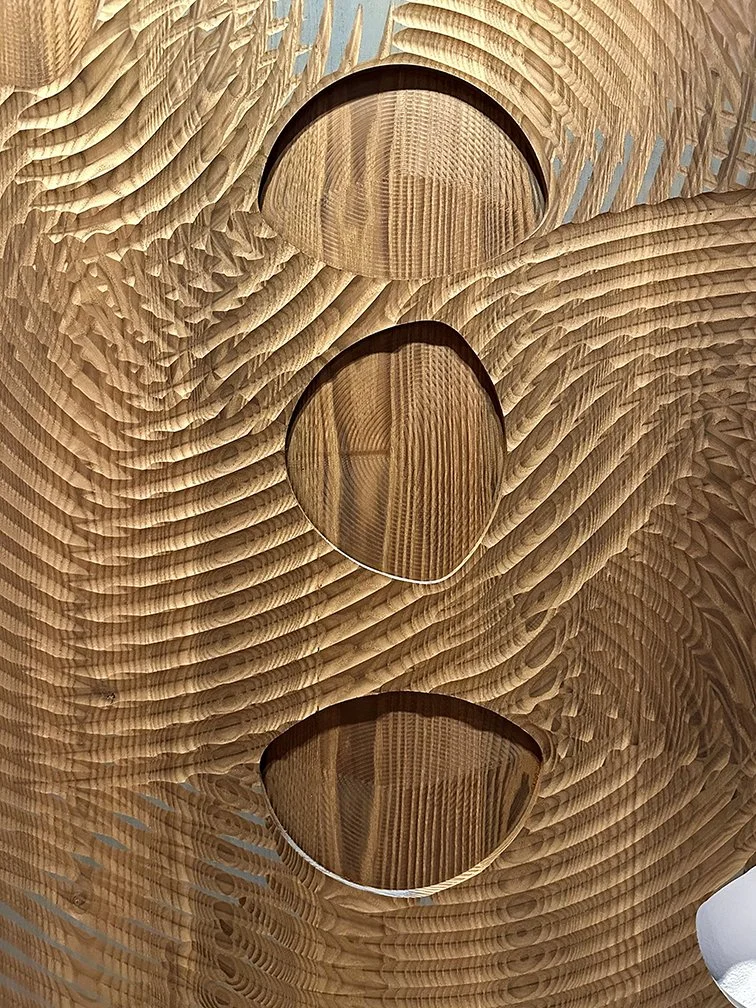
Door (Found angel) detail
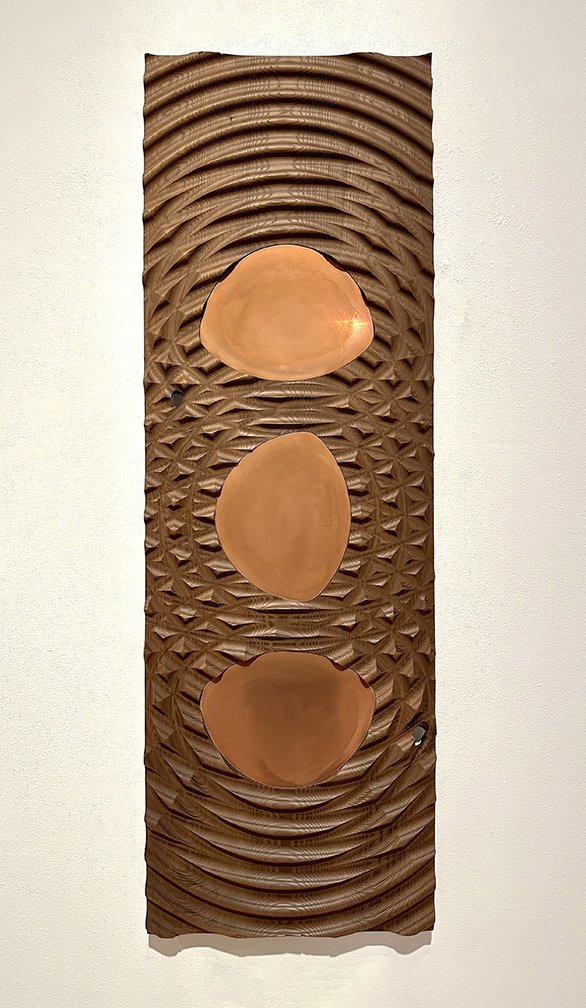
Panel (Found angel), 48.5” H x 16.5” W x 1.5” D, 2023
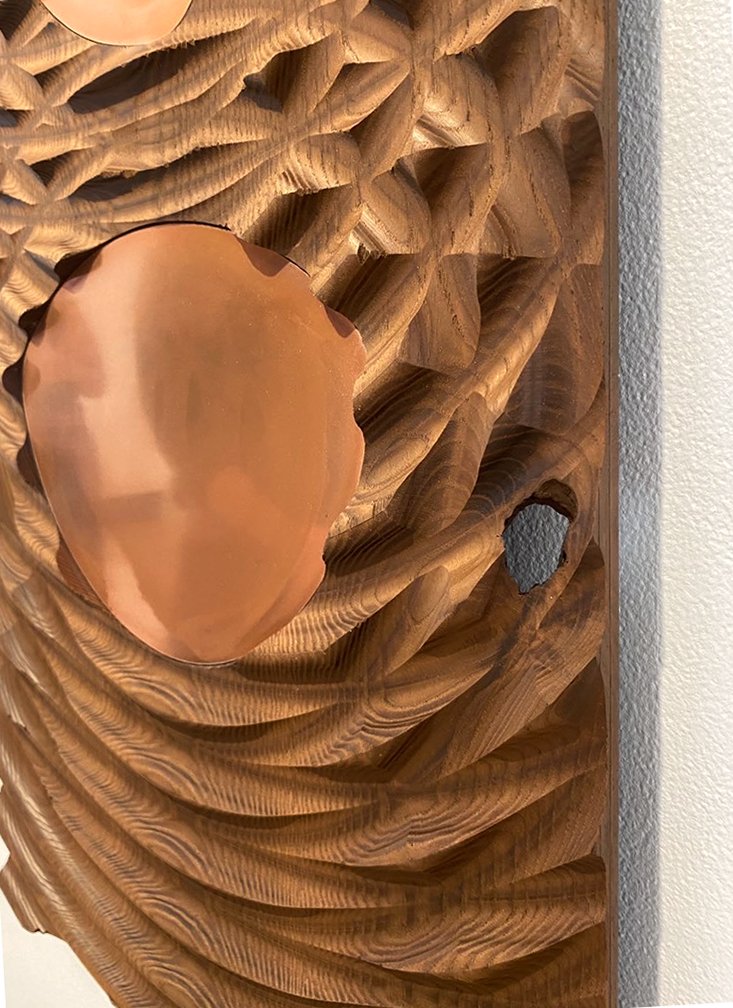
Panel (Found angel) detail
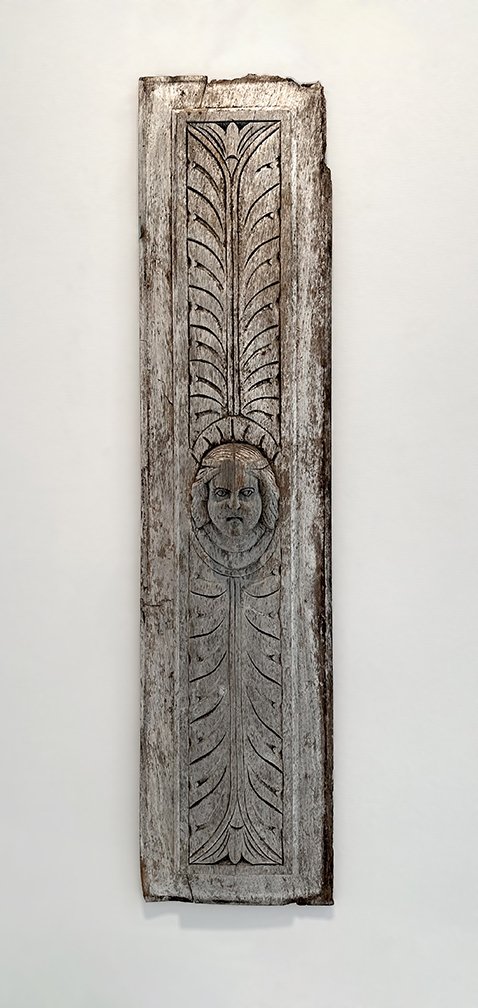
Found angel 1, 49” H x 11” W x 3.5” D, 2023
Day 1 (230609)
Two thermally modified panels were sanded and polished to 3000 grit, giving a mirror finish without the use of lacquer. One was also waxed. They were then left in the rain for 24 hours. The water spots and stains on the wood contrast the perfectly crafted surface of the material.
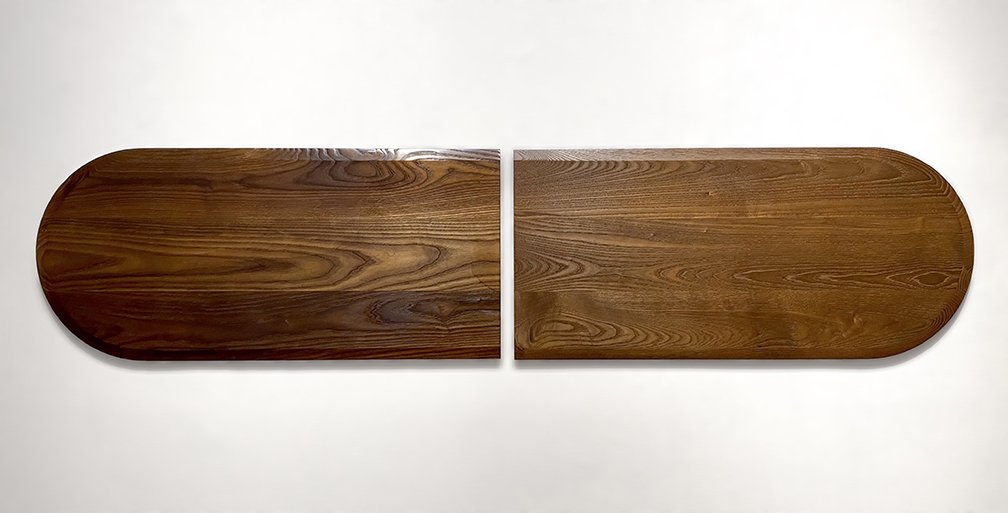
Day 1 (230609), 16” H x 71” W x 1” D, 2023
Ash Caramel Ink - Drawings and prints
Ash wood is normally a light blond color. The thermal modification process turns it a rich, dark brown. Additionally, it imparts a characteristic caramel/coffee scent. These are the remnants of the caramelized sugars, resins, and organic compounds transformed during modification. I was very interested in isolating the only discernable product of thermal modification. It became an ink that I used to make drawing and prints.
Perpetual Drawings
I dripped ash caramel onto white powder-coated aluminum panels and left them to dry in the sun. As the panels are non-porous, the drawing changes based on its environment. The sun dries the ink and sets the composition. Water is reintroduced via rainwater, which flows around the panel based on wind and gravity. The image changes daily

Perpetual Drawing 2, 24" H x 24" W, 2023
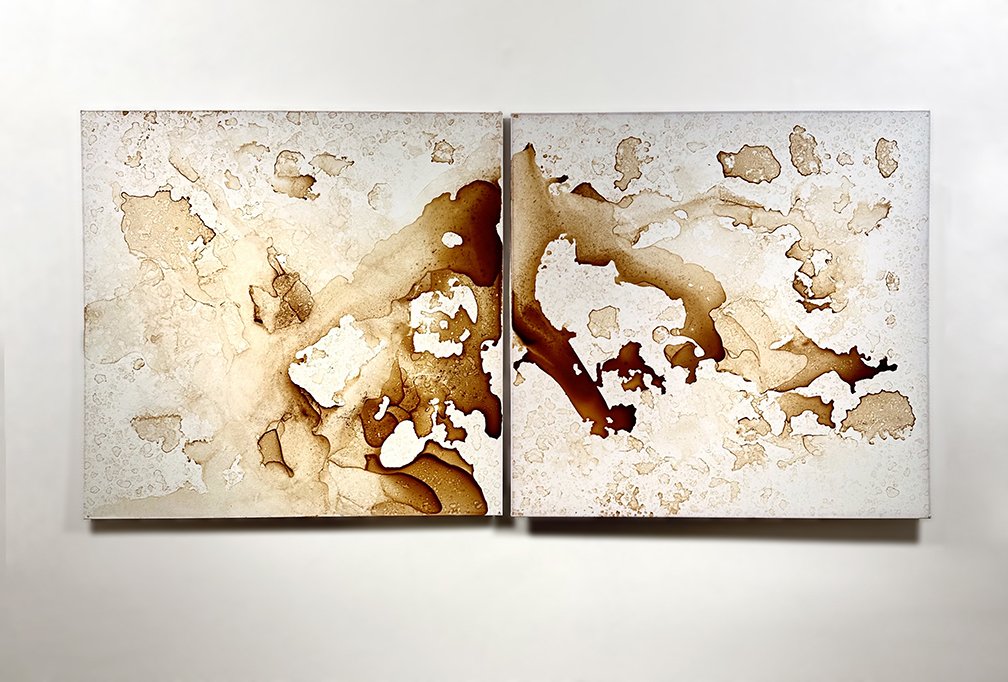
Perpetual Drawing 4, 24" H x 48.5" W, 2023
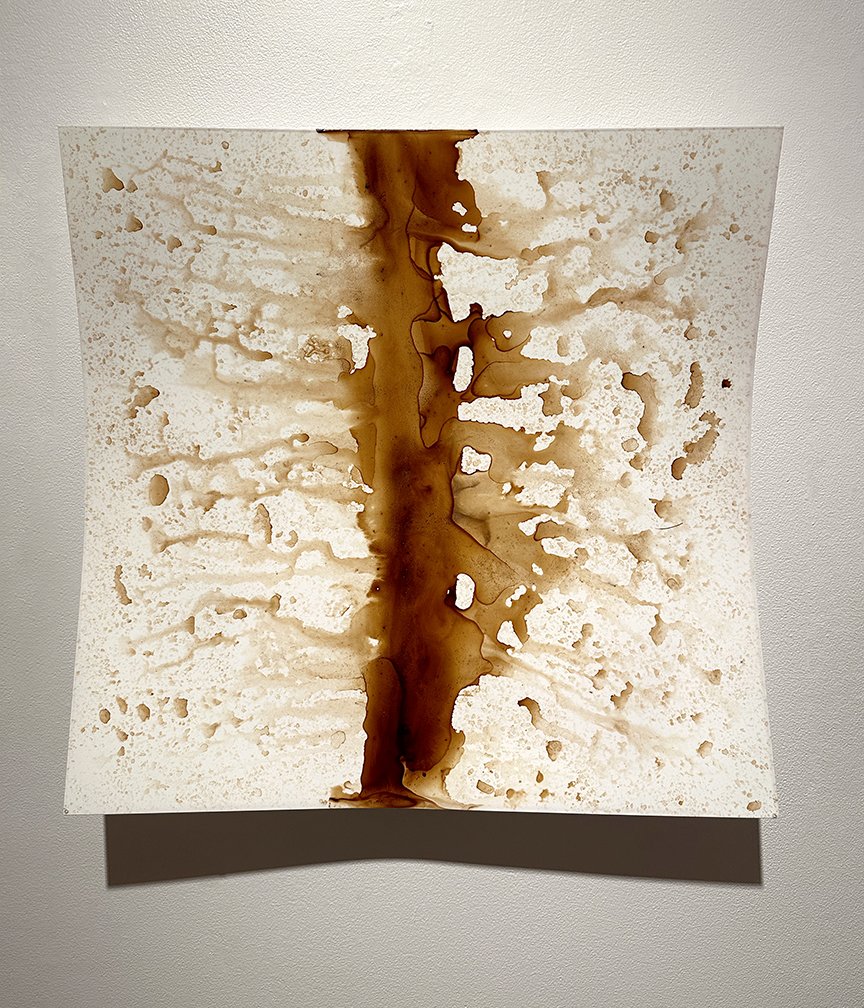
Perpetual Drawing 7, 24" H x 24" W x 3" D, 2023
Prints
A series of CNC-routed and lasercut woodblock prints question the future relationship of domestic ash trees and emerald ash borers. It is estimated that 99% of the ash trees in the U.S. will be killed by this invasive insect.
All works were printed by the wonderful people at IS Projects, Miami
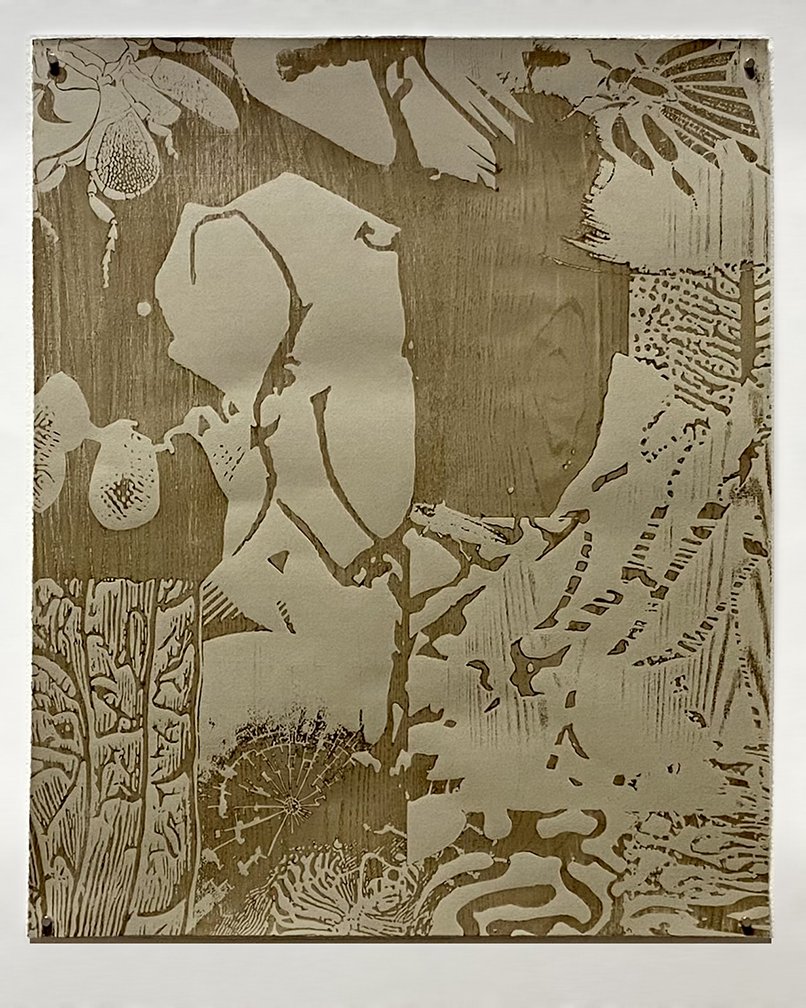
Coming for the maple (Edition of 12), 26” h x 20” W, 2023
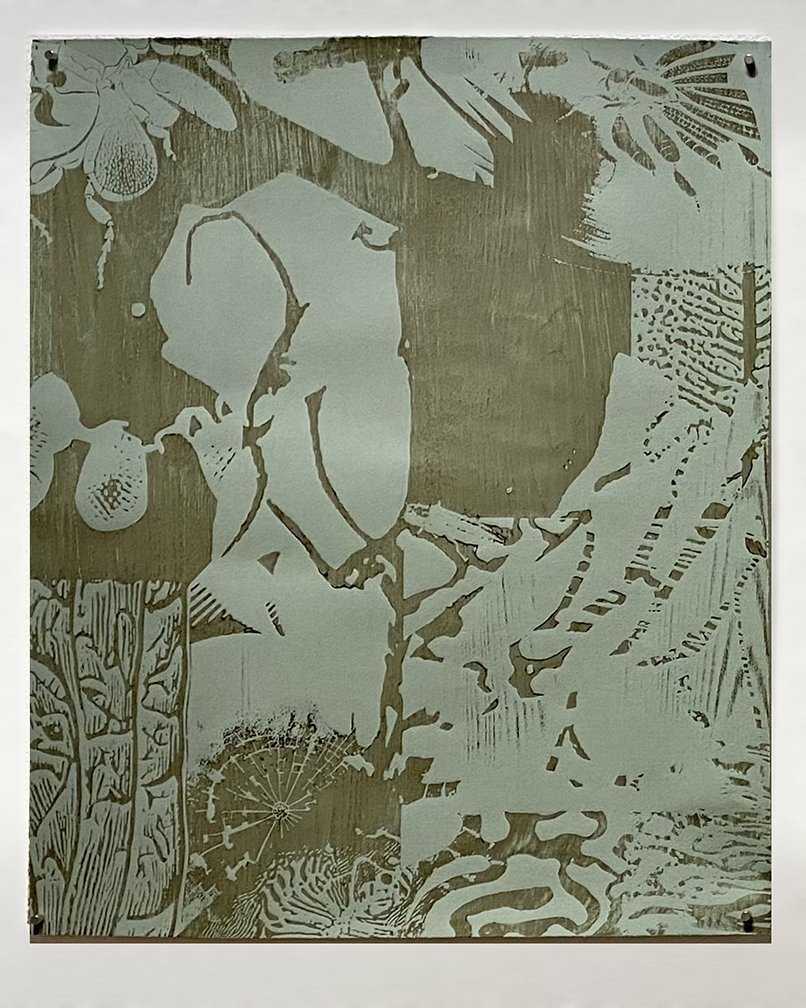
Coming for the maple (Edition of 12), 2023
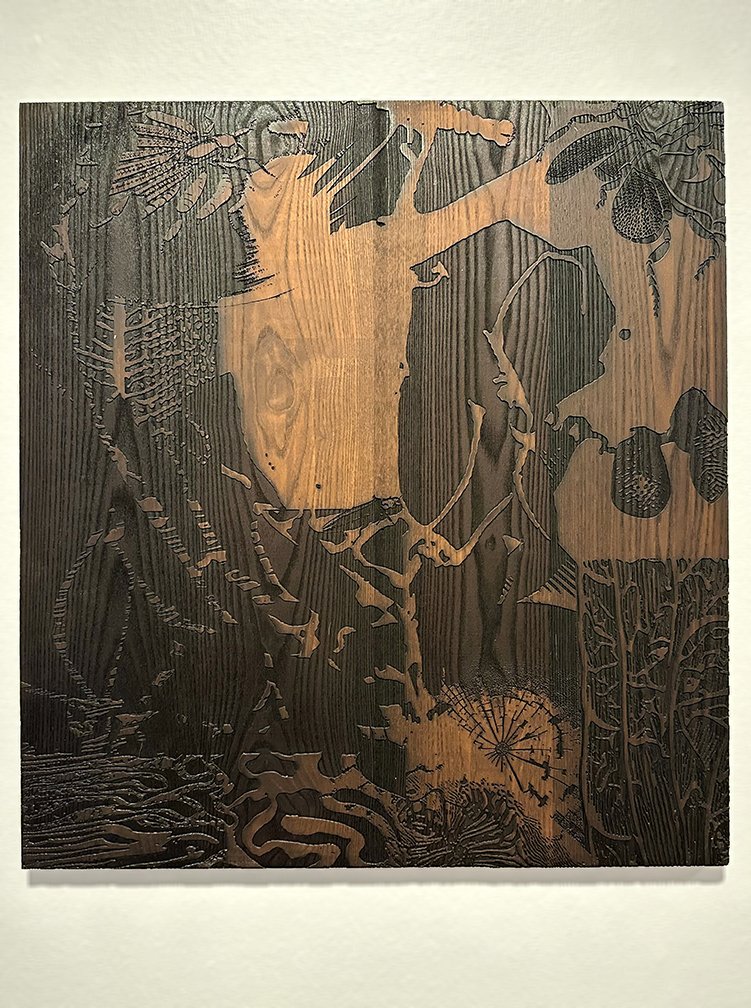
Coming for the maple woodblock
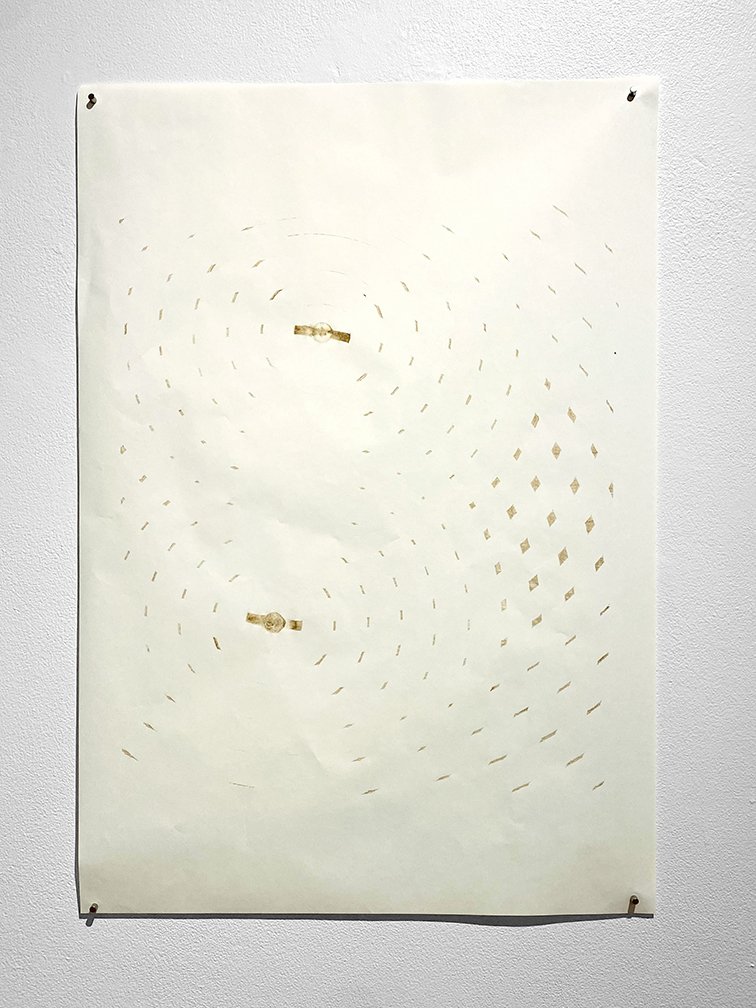
Vector (Edition of 6), 36" H x 26" W, 2023
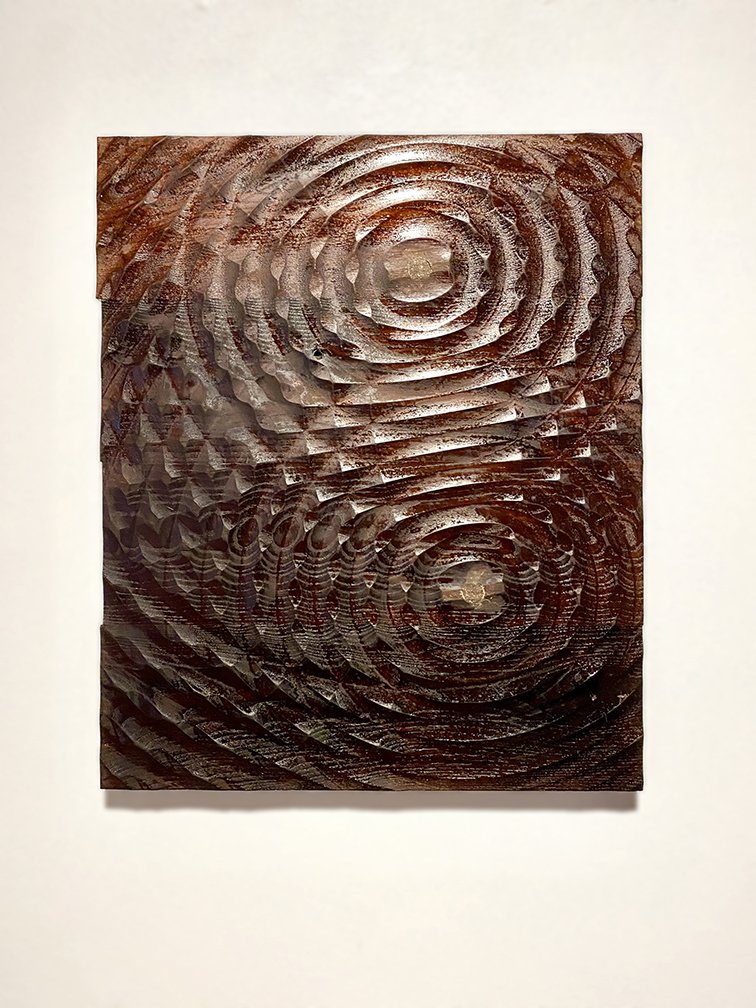
Vector woodblock
Made possible with support from the Broward County Cultural Division
Support has been provided by the following Funds at the Community Foundation of Broward:
Helen and Frank Stoykov Charitable Endowment Fund
Louise and Rudi Dill Charitable Fund
Mary and Alex Mackenzie Community Impact Fund

